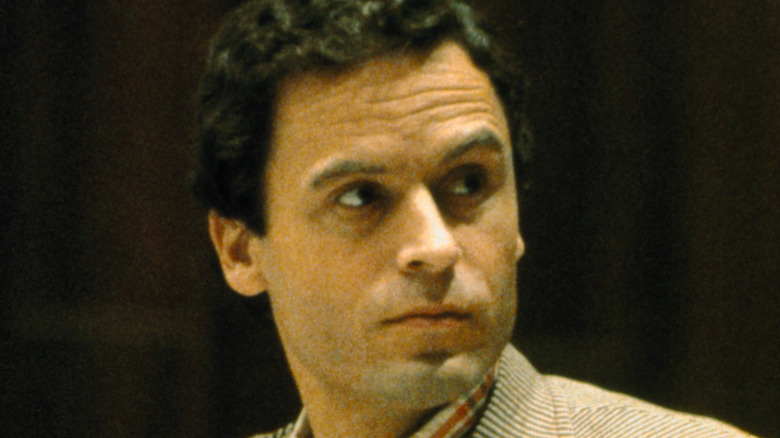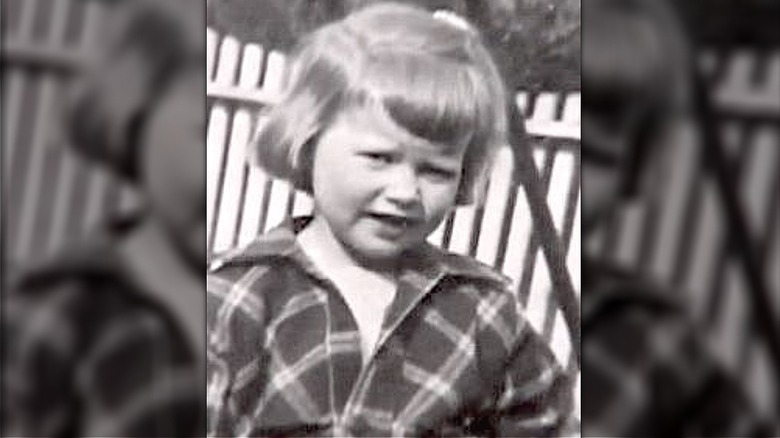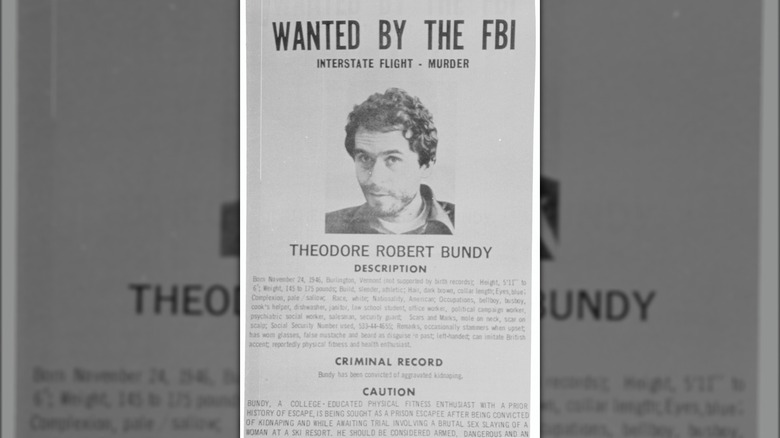The Story Of Ted Bundy's First Potential Victim, Ann Marie Burr
As Ted Bundy's time on earth ran down in a Florida prison, nearly 3,000 miles away, in Tacoma, Washington, two parents of a girl who went missing decades earlier hoped the serial killer would finally reveal the truth. Bundy, who confessed to killing 30 women and girls, had already denied any involvement in the disappearance of 8-year-old Ann Marie Burr in August 1961, per "The Only Living Witness." But Beverly and Donald Burr didn't believe him, and as Bundy's execution in the electric chair was imminent, they continued to hold out hope for more information. "Now I think I could accept an answer," Beverly told The News Tribune. "I don't think I wanted to know if she was beaten and strangled in years past."
At 5:15 a.m. on August 31, 1961, Ann Marie Burr disappeared from her second-floor bedroom in the family's Tacoma home, according to the Associated Press. The blond girl with hazel eyes had been wearing a blue and white flowered ankle-length nightgown and was barefoot, per the Box Elder News and The Olympian. She had completely vanished without a trace.
Ted Bundy lived in the same city
There wasn't much for the police to go on. It had been a stormy night and they found a footprint on a rug, a bit of wool from a jacket — and not much else. "There were no signs of a struggle in her bedroom," Bob Drost, who had been the lead investigator in the case, told The News Tribune in 1976. Neither a massive search involving over 800 people nor a $5,000 reward helped in locating the girl or revealing what had happened to her, per the AP and The News Tribune. The case went cold.
During the mid-1970s, more than a decade after Ann Marie Burr disappeared, police in Utah, Colorado, and Florida charged Ted Bundy with a series of crimes from kidnapping to murder. The Burrs began to believe Bundy may have been involved in their daughter's disappearance. In 1961, Bundy lived in Tacoma and was 14. Beverly had always believed it had been a teenager who abducted her daughter — the bench the perpetrator used to get into the home's window was too flimsy for a full-sized adult, and a footprint outside made by a tennis shoe also pointed to a teen, per The News Tribune. Donald Burr recalled seeing a teenager who looked like Bundy at a construction site just after his daughter's abduction. The serial killer would strenuously deny any involvement in the case on several occasions.
Denials and a DNA test
In 1986, Beverly Burr wrote a letter to Ted Bundy while he sat in prison and accused him of the crime. "What did you do with the tiny body?" she asked (via the Internet Archive). "God can forgive you." "I can certainly understand you doing everything you can to find your daughter," Bundy wrote back. "Unfortunately, you have been misled by what can only be called rumors about me." He denied any knowledge of her daughter's case. "At the time I was a normal 14-year-old boy," he wrote.
Just before his death, he spoke to Robert Keppel, a Washington state investigator, and again denied the crime. "No. Absolutely not," Bundy told Keppel (via "The Riverman: Ted Bundy and I Hunt for the Green River Killer"). "That's one of the few I wish that people would believe." Bundy said that in 1961 he lived across the city from the Burrs and although he had a newspaper route, it didn't include their neighborhood.
In 2011, the Tacoma Police Department sent evidence from the Burr case to the state crime lab hoping the agency could develop a DNA profile of the perpetrator and test against Bundy's DNA, which the FBI had taken from an old blood sample found years after his execution, per the Tacoma News Tribune. Unfortunately, there wasn't enough material to develop a profile. To this day, the case remains open, and Bundy, if he was behind Burr's disappearance, took the truth to his grave.


